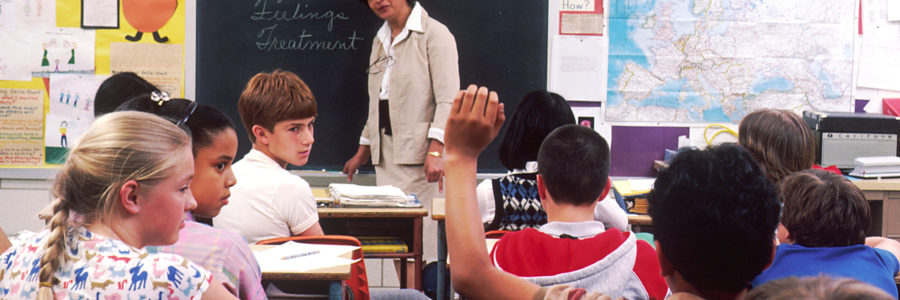It goes without saying that being too hot or too cold in any environment makes it difficult to concentrate. Schools are no exception! In hot climates, kids are often stuck focusing on how hot their classroom is rather than memorizing their multiplication tables. If your school has an air conditioner that isn’t working properly, give your Denver commercial HVAC professionals a call today. Here’s some pros and cons to having air conditioning in schools:
Air Conditioning in Schools – Is it Essential for Learning?
Schools are in session, starting in August and September, or sooner. Some districts do not have air conditioning in schools. This leaves students to sweat through the day.
Districts across the U.S. faced these problems at the beginning of the 2016-2017 school year. Schools from Detroit to Los Angeles had heat-related closures. Kindergarteners through college students were affected.
While uncomfortable, is the heat hampering the learning process? Research has shown that indoor air quality can impact learning. Could cooling also affect a child’s education? Should air conditioning in schools be mandatory?
Why is there no air conditioning in schools?
A lack of cooling in the classroom stems from various problems. Many schools have air conditioners, yet they don’t work. Some school districts cite unfinished maintenance requests. Others say they don’t have the money to fix or replace their cooling systems.
Some schools do not have existing air conditioners. Cooling systems were never installed in some schools. In those that wish to obtain air conditioning, the funds aren’t available.
The effects of no air conditioning in schools
When students and teachers are sweating, are they able to concentrate on learning? Probably not.
When exposed to very cold temperatures, the brain isn’t thinking about learning. Instead, it’s reminding the body that it’s cold. It’s interrupting learning, urging the body to take action to warm up. Cooling down the body to avoid heat exhaustion consumes energy. This consumes bodily resources which could be used for learning. These physical demands can affect brain function, which impacts decision-making in learning.
Studies have shown that children’s academic performance declines in higher temperatures. In hotter classrooms, headaches and heat exhaustion symptoms develop. These physical symptoms can hinder academic performance. Warm classrooms also decrease interest and alertness, distracting students. Even research performed by high school students shows that test scores fall in warmer environments!
Read the full article at hvac.com

